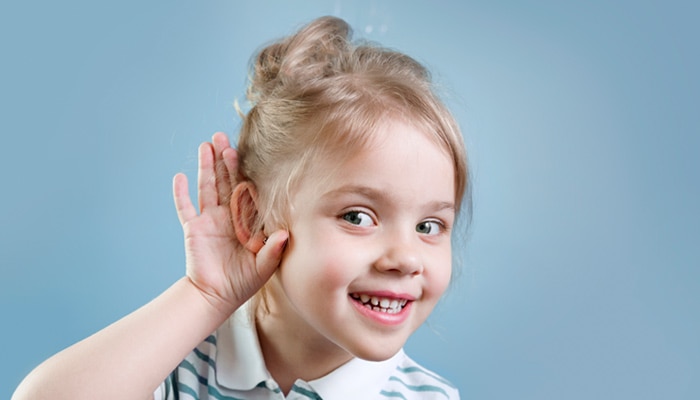While we believe that the books and resources recommended may be of value to you, keep in mind that these are suggestions only and you must do your own due diligence to determine whether the materials are appropriate and suitable for your use. PNC has no sponsorship or endorsement agreement with the authors or publishers of the materials listed.
MY FIVE SENSES

Do You Hear What I Hear?
Children will learn about hearing and sounds.

Lesson Objective
The children will explore their sense of hearing and understand how hearing helps us learn about our world.
Science
What You'll Need
- Small containers with lids (such as film canisters, empty pill containers, plastic Easter eggs) – 1 per child
- For each of the following materials, fill two containers half full:
- Beans
- Rice
- Pennies
- Marbles
- Dried peas
- Jingle bells
- Sand
- Birdseed
- Dry pasta
- Shoe box
- Tacky glue or glue gun (adult use)
- A few familiar items from around the classroom like a crayon, toy car, small wooden block, bell, ball, tambourine
What To Do
Note: This lesson requires advance preparation.
Prior to the day of the lesson: For each of the materials (beans, rice, etc.), fill two containers half way. Do not overfill the containers or they will not make much noise. Identify the containers that have the same materials with a symbol or sticker. Glue the lids shut with tacky glue or a hot glue gun and let them dry overnight.
- Without the children watching, place one of the classroom items into the empty shoe box and shake the box.
- Ask the children to guess what it was they heard (see Guiding Student Inquiry).
- Try the activity with a few more objects you collected from the classroom.
- Distribute the sets of the prefilled containers to the children, one container to each child.
- Tell the children to keep the containers closed and give them time to explore the containers.
- Have one child shake his or her container and challenge the other children to find the container that sounds the same.
- Assist the children by going around the room while the children shake their containers, one at a time, listening for the container whose sound is an exact match.
- Continue until all of the matches have been found.
Resources
Home School Resources
Home educators: use these printable lesson PDFs to teach this lesson to your home schoolers. They're available in English and Spanish.
Content Provided By
Common Core State Standards Initiative – These lessons are aligned with the Common Core State Standards ("CCSS"). The CCSS provide a consistent, clear understanding of the concepts and skills children are expected to learn and guide teachers to provide their students with opportunities to gain these important skills and foundational knowledge [1]. Visit the CCSS


